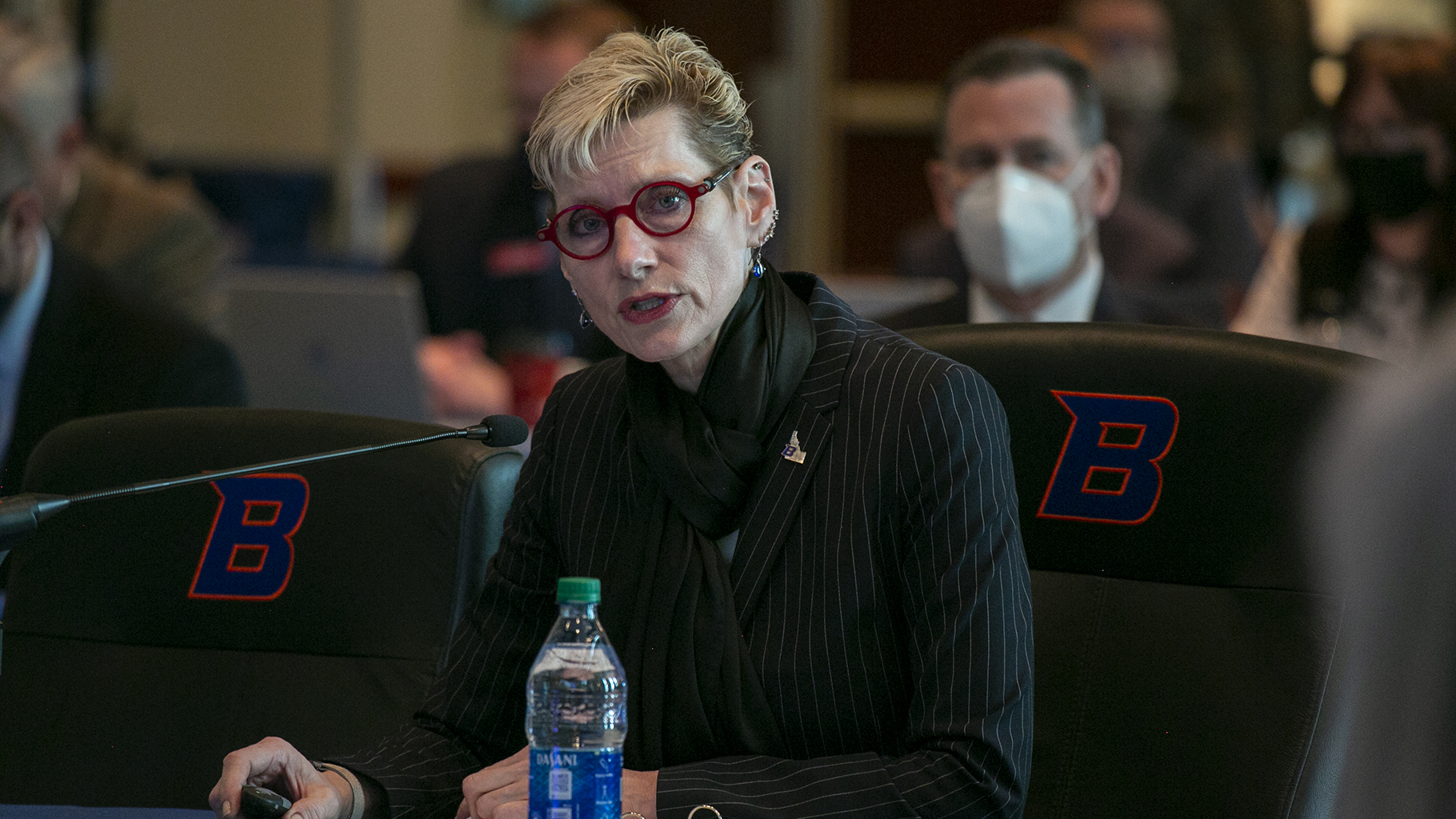
On Thursday morning, Marlene Tromp took her talking points from the Statehouse to the State Board of Education.
And things couldn’t have gone more differently.
Three weeks ago, the Boise State University president had another contentious budget hearing before the Legislature’s Joint Finance-Appropriations Committee. Rexburg Republican Rep. Ron Nate pressed Tromp, repeatedly, for details about how Boise State had cut its budget to eliminate “wasteful” social justice programs and meet the Legislature’s directives. Tromp didn’t provide specifics, and instead said the programs have “evolved.”
The social justice fight didn’t come up Thursday. Tromp certainly didn’t bring it up. The State Board didn’t go there either. Instead of grilling Tromp, board President Kurt Liebich and board member Linda Clark praised her.
These two exchanges speak volumes about higher education politics in Idaho.
Within the Legislature, Nate represents a vocal and sizable segment: a hardline wing that is convinced Idaho’s college campuses are a hotbed of woke diversity and inclusion programs. There are enough lawmakers in that camp that the 2021 Legislature chopped $2.5 million from the higher education budget.
Granted, the budget didn’t single out Boise State, although Boise State took a $1.5 million hit, as opposed to $500,000 apiece for University of Idaho and Idaho State University. And Nate asked similar questions about budget cuts when U of I President C. Scott Green and Idaho State President Kevin Satterlee had their turn before JFAC. Arguably, however, Tromp has become the face of the Statehouse debate over the direction of Idaho higher education. At some level, this tension is both personal and political.
But the relationship between Tromp and the State Board is not adversarial. Instead, it’s collaborative.
Liebich thanked Tromp for aligning Boise State’s goals and spending with the State Board’s K-20 strategic plan. “The only way it happens is if it actually is adopted by you and your leadership team, and it’s built into your plans.”
Clark thanked Tromp, and her fellow presidents, for adopting Complete College America’s guidelines for helping students navigate college — a group of recommendations that include “guided pathways” to help students avoid taking unnecessary courses, and “corequisite” programs that replace non-credit remedial classes with courses that allow students to earn college credits. Said Clark: “We believed, when we started with them, that they were game-changers, and your data certainly supports that.”
The data, submitted in Boise State’s annual progress report to the State Board Thursday, included some promising numbers on math. Boise State has phased out remedial math classes, replacing them with “credit-bearing gateway courses that provide supplemental support.” The reworked math strategy is leading to improvements in pass rates in algebra and calculus: for instance, 81% of students passed intermediate algebra in 2020-21, as opposed to 36% in 2005-06.
But not all the numbers are as encouraging. As Boise State’s out-of-state enrollment continues to surge, in-state enrollment has stagnated. Enrollment is falling among first-generation students, and students eligible for federal Pell grants. And the six-year graduation rates reveal some troubling gaps: in-state students are less likely to leave campus with a degree; and grad rates for first-generation students and Pell-eligible students lag as well.
Tromp didn’t walk through these enrollment and graduation numbers, which were also part of the State Board packet. But she did recap some programs that she hopes will make a difference:
- The Community Impact Program, which aligns rural, online students with faculty mentors.
- A one-stop shop to support 1,200 veteran students.
- Incorporating undergraduate students into university research — in hopes of engaging students and encouraging them to stay through to graduation.
All of this goes to Tromp’s underlying objective: “What we’re striving to do at Boise State University is really meet our students where they are, to move the needle on reaching new students, and helping the students we have here achieve success.”
But a quote like that means different things to different audiences.
To State Board members — who see their role as collaborative — meeting students where they are is likely seen as a foundational goal. And reaching that goal means taking many courses of action: rural outreach, reworked remediation programs, and more.
To skeptical lawmakers — who see their role as adversarial — meeting students where they are might sound like a code phrase for the diversity, inclusion and equity programs they’ve been pushing to remove from the budget.
Tromp has to keep both of these constituencies happy.
She wants to convince legislators to pass a spending plan that keeps the campus whole — and find enough allies to avoid a budget bloodletting. But if she wants to keep her $425,000-a-year job, she has to maintain the support of the State Board members who hired her.
If Thursday demonstrated one thing, it showed that Tromp has the State Board on her side.
Check back later Thursday for additional State Board of Education meeting coverage.
Kevin Richert writes a weekly analysis on education policy and education politics. Look for his stories each Thursday.
